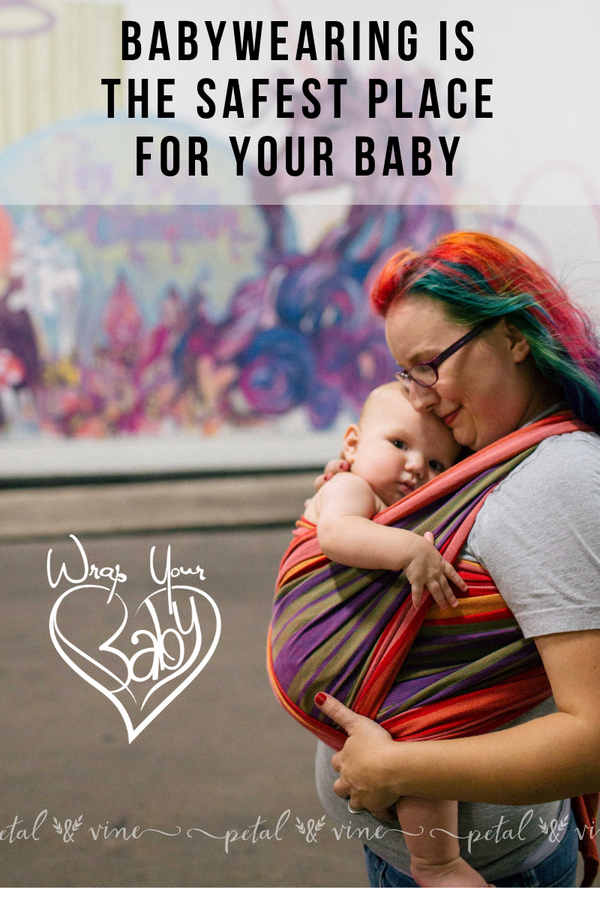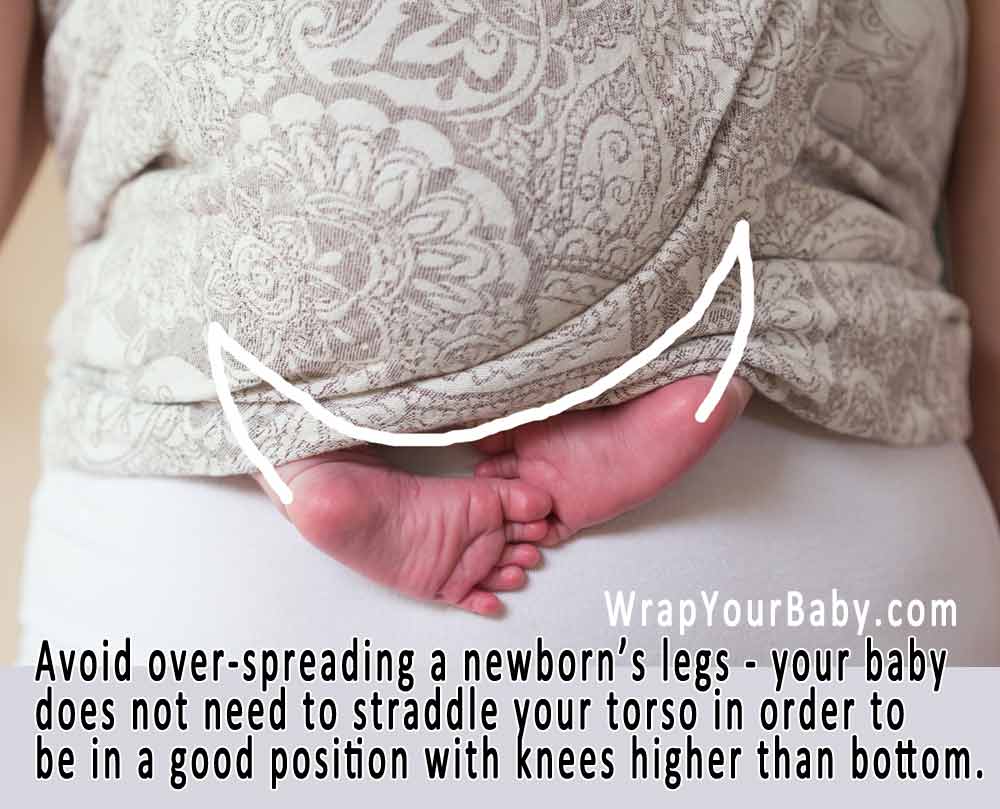Babywearing Safety

Generally speaking, wrapped on your chest is the safest place for your baby. Your baby’s body is designed to develop and regulate while in contact with a healthy adult body, so keeping baby close not only promotes optimum development and emotional reassurance for baby but reduces the risk of SIDS and also keeps your baby’s face in your view constantly so you know if there is the slightest problem.
Compared to other baby carriers, woven wraps offer the best support of baby’s physiology which most important with newborns and small or low-muscle-tone infants. Learn how to support the healthiest position for your newborn.
In case a parent should fall, a wrapped baby is generally safer than a baby who is held in arms or a baby in a stroller since the wrapped baby cannot be dropped, and your arms are free to catch yourself from doing a face-plant.
Obviously, practice common sense and basic parenting care by not engaging in dangerous activities while holding or wrapping your baby. This includes anything that you could fall off of, anything moving, anything that involves fumes, heat, projectiles, or the possibility of falling objects. Hopefully every parent knows that when driving your baby is required to be in an approved carseat and not in your lap or in your wrap. Jogging with your baby in arms or in a wrap is jarring and will shake your baby so should be avoided (this is one scenario for which I actually recommend a jogging stroller). You get the idea.
The main babywearing safety rules are:
-
make sure baby’s face is clear of fabric and in view.
-
check your wrap job to ensure that baby is secure.
-
do not engage in dangerous activities while holding your baby in arms or in a wrap.
Ideal Wrap Positioning for babywearing safety:
It’s good to know the best positioning for your baby or toddler so that you can use the wrap to support them the best way you can, physiologically. If your baby has special needs, definitely consult with your doctor about how to support your baby’s specific needs.
- Wrap baby in an upright position.
- Keep baby close enough to kiss and baby’s face in view.
- Baby’s chin should be up, kept off the chest for clear breathing.
- Wrap snug enough to support baby’s spine so that baby cannot slouch down in the wrap.
- The wrap should form a seat under baby’s bottom and scoop baby’s knees upwards, tilting baby’s pelvis upwards.
- Baby’s spine supported in the naturally rounded shape, not forced straight (newborn babies start with a concave C shaped spine which naturally develops over the first year of life).
Visit this page for information about safely wrapping a newborn baby.



